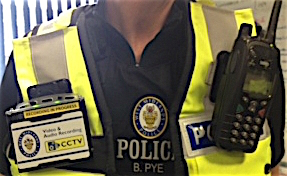Judge releases body cam video in tragic shooting of 6-year-old boy

A tragic criminal case in Louisiana demonstrates the power of police body cam video to affect the justice process. This week a Louisiana judge released video of the killing of a 6-year-old boy by two police officers at the end of a high speed car chase. When the officers opened fire, they didn’t know the child was in the back seat. But a viewing of the body cam video of a third police officer on the scene contradicted their claims that the suspect driving the car had just rammed them, and therefore posed an imminent risk, justifying the use of deadly force. The video shows that the suspect was actually stopped with his hands in the air, apparently surrendering, when police opened fire with a barrage of lethal bullets. The suspect was severely wounded, and the child killed. This key video evidence lead to indictments of the two police officers for second degree murder.
The death of an innocent child for any reason is tragic, but to lose a child at the hands of law-enforcement officers sworn to protect and serve the community is maddening. And incidents during which police officers seem to use excessive, sometimes lethal force in video recordings are appearing in the media more and more frequently. Some of these incidents even lead to prosecutions. Though most cops prosecute their duties honorably and effectively, within the limits of the law, video evidence from camcorders, dash cams, and now ubiquitous cell phones, and increasingly, body cams worn by the police officers themselves, have contributed to a growing awareness that cops sometimes cross the line, using inappropriate and even criminal levels of force during arrests and other interactions with the public.
Police are often resistant to wearing body cams. A police union in Boston, Massachusetts recently insisted that a pilot body cam program remain strictly volunteer, then encouraged its members not to join. However, these devices have provided crucial evidence that’s allowed prosecutors to make better decisions. The use of body cams should not only be encouraged, but should be mandatory for all police officers who regularly interact with the public and have a reasonable chance to make arrests. The devices can safeguard honorable officers falsely accused of brutality and other offenses, and bring to light the poor behavior and decisions of those officers who transgress. Either way justice is served.
There are of course privacy issues and related concerns to work out. Who views body cam video, and how frequently? Are officers allowed to view the video before making their reports? Are officers allowed to turn off their body cams at will, or should they constantly record? What degree of discrepancy between police testimony and body cam footage is required to trigger an investigation, or warrant charges? When, if ever, should body cam video be released to the public? These questions are important, but intelligent people of good will can, with the right amount of inquiry and debate, answer them. The most important thing is to deploy this helpful technology as quickly and widely as possible, to aid police throughout the country, along with the rest of the criminal justice system, in their mission to protect and serve the people.
Learn more about this tragic case (CNN.com)

